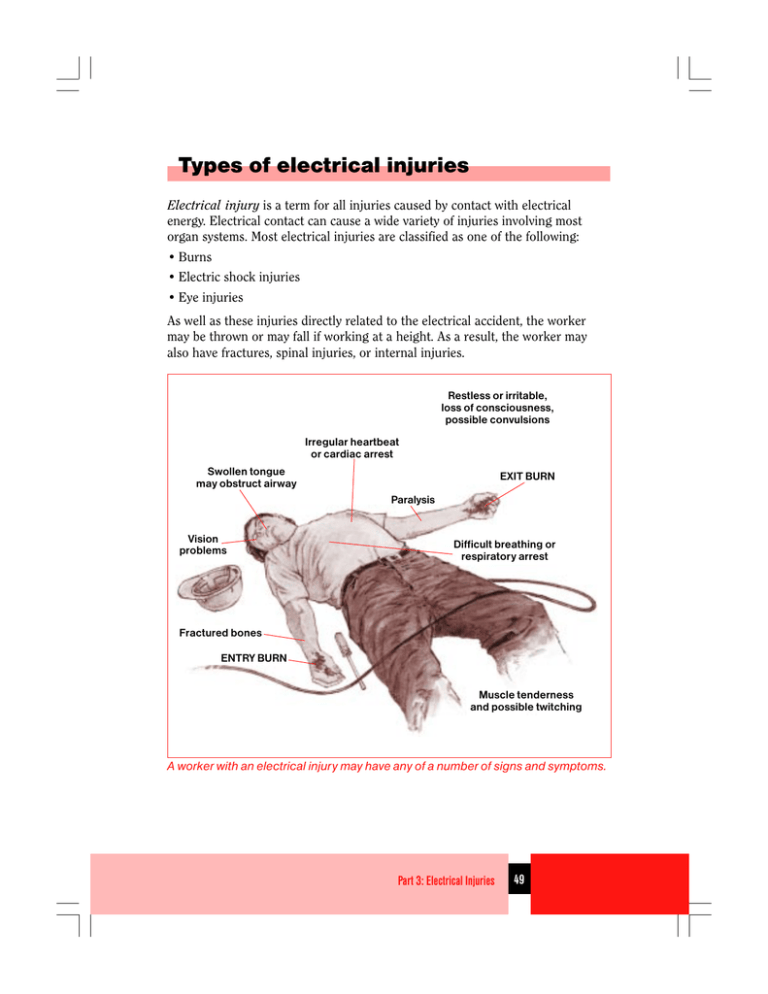
Electrical shock is an exposure to an electric current that has the potential to cause serious injury. The type of electric shock that is received depends on the strength of the current, the path it takes through the body, and the duration of contact. The symptoms of electric shock vary depending on the type and severity of injury. Some types of electric shock may cause an interruption in the heart’s function, unconsciousness, or even death. Because of these serious consequences, electrical shocks are classified into four types:
The first type of electric shock is mild, which means it will not seriously damage the body. The second type is more dangerous, and can lead to serious injuries. In most cases, the person will require surgery and remain in a coma for several days or weeks. The duration of the shock depends on the strength of the attack, the location of the injury, and the severity of the shock. During the second phase of an electric shock, the pulse becomes more frequent and breathing slows down.
The second type of electric shock is more severe. It results in a loss of consciousness and a weak pulse. This state can last for ten minutes to several days. This is also important to note that the type of shock is dependent on the path that the electric current takes. Different tissues in the human body have different resistance, so a person is more susceptible to electric shock when they are in a hurry or are in a high-stress environment.
The third type of electric shock causes clinical death. In this phase, the heart and lungs stop functioning and the person dies. There is no circulation and respiration in the body, and the person is completely disoriented. Those who suffer this kind of electrical shock can suffer respiratory failure, heart failure, and even death. These three types are the most dangerous. In cases where a person’s heart does not work, he may experience respiratory or heart failure.
The second type of electric shock is more serious and requires medical attention. This can lead to internal damage, so it’s important to check with your doctor if this happens. Site funbox.co.th says that although a mild electric shock will not affect the heart, it is still important to seek medical attention. If the person is unconscious or has difficulty breathing, they should be taken to the hospital immediately. If they have experienced an electric shock, they should be examined for breathing and signs of life.
The most dangerous type of electric shock is one that can kill a person. This type is the most common type of electric shock as it can damage vital organs and prevent them from functioning properly. However, minor electric shocks are possible. But the most dangerous type of electric shock is the most dangerous. Despite its name, this can cause serious injury. In fact, it can even kill a person.
The effect of electric shock is determined by the body’s response to an electric current. This could result in the death of a person or serious injury. The leading cause of death is ventricular fibrillation, a condition in which the heart stops beating. If a person is electrocuted, he may lose consciousness. They may also die from cardiac arrest. The best treatment for electric shock is cardiopulmonary resuscitation which can be performed by a trained person.
At the first stage, an electric current passes through the body, heating the tissues along the entire length of the stream. Deep burns require major surgery, while superficial burns can cause temporary pain. The second phase is called hyperthermia. An electric shock usually lasts ten minutes or longer, depending on the severity. The first phase may be mild and cause no permanent damage, but may result in temporary loss of consciousness.
The second phase of electric shock is known as clinical death, and the body does not respond to pain or light. The heart and lungs do not work properly, and the person loses consciousness. The next phase is known as clinical death. In the third phase, there are no signs of life and no reaction to light. The second phase is known as anemic and is the most dangerous of all types of electric shock. The last phase is called apnea.